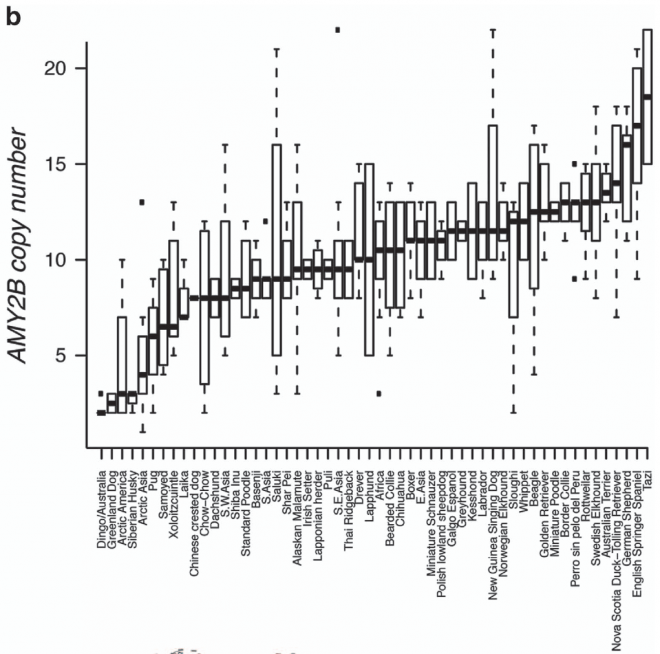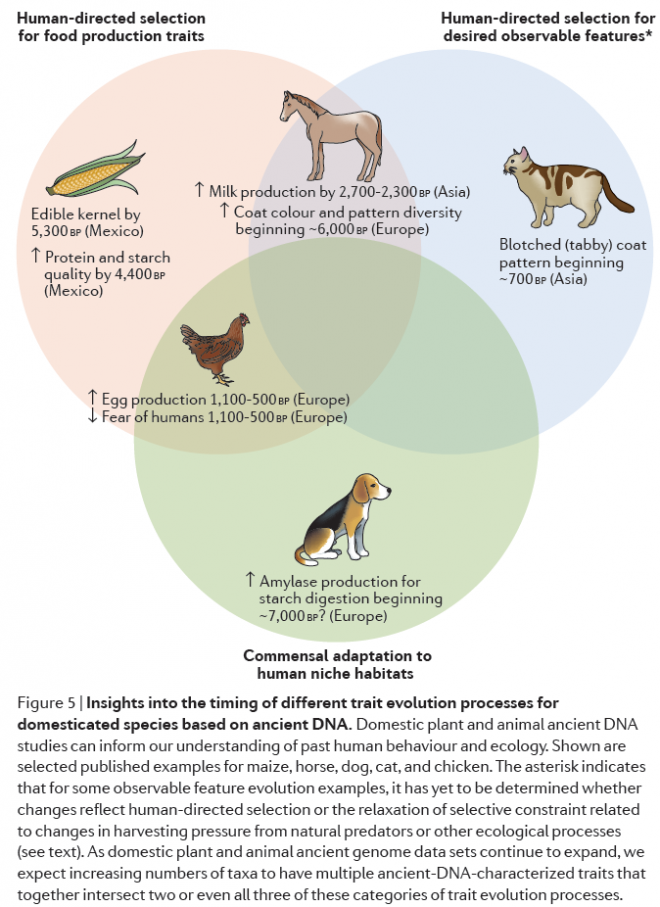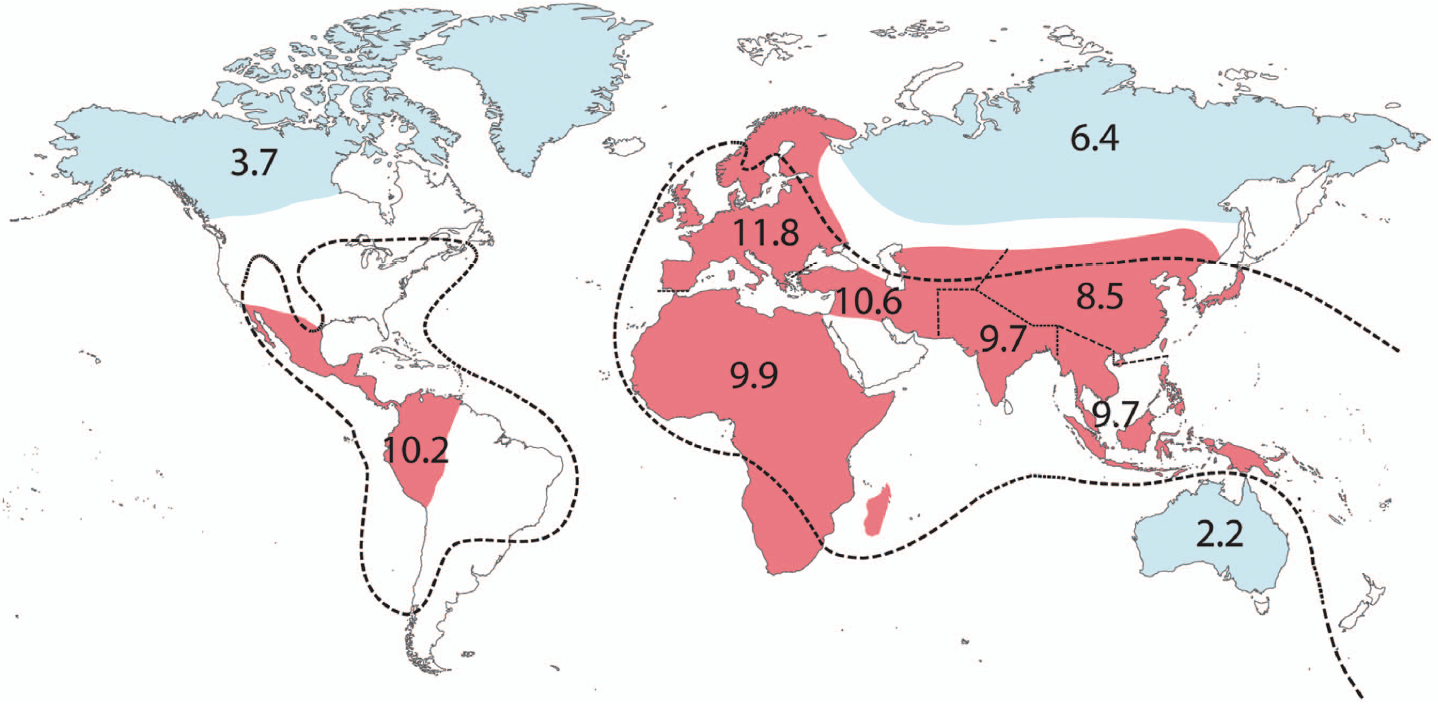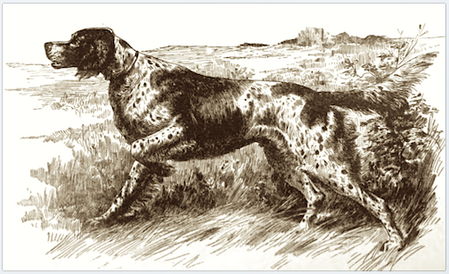In this chart, the dogs with two or very few copies of the gene include the most primitive breeds and some of the spitzes (Dingo, Greenland Dog, Siberian Husky, Pug, Laika, etc). Among breeds that typically average more than 12 copies of the gene are the English Springer Spaniel, German Shepherd, Rottweiler, Border Collie, and whippet. The breed with the most AMY2B copies determined so far is the Tazi, with an average of about 18 and some individuals with more than 20.
Dogs were used to guard and manage livestock, but the animals were how shepherds made their living and were extremely valuable. They were not the food source for the shepherd and his dogs. Instead, they were used as a renewable resource, providing milk on a regular basis and reproducing yearly to produce the income of the next season. Eating the livestock would be self-defeating, like spending the principal in a savings account instead of just living on the funds produced by earned interest. Instead, the dogs and their shepherds lived primarily on their renewable resources, grain and milk, perhaps with an occasional wild animal for meat, so both had diets that were high in starch. Dogs with more copies of the AMY2B gene would be more efficient at digesting starch, and if this was a major component of the diet it would drive selection for an increase in the number of copies of the gene.
Arendt M, KM Cairns, JWO Ballard, P Savolainen, & E Axelsson. Diet adaptation in dog reflects spread of prehistoric agriculture. Heredity 2016: 1-6.
Marciniak S & GH Perry. 2017. Harnessing ancient genomes to study the history of human adaptation. Nature Reviews Genetics 18: 659-674. doi:10.1038/nrg.2017.65
Pennisi E. 2016. How farming changed the dog. Science 360(6391): doi:10.1126/science.aal0353
Sign up for ICB's terrific online course
THE BIOLOGY OF DOGS
Starts 4 June 2018
Register NOW!
ICB's online courses
***************************************
Visit our Facebook Groups
ICB Institute of Canine Biology
...the latest canine news and research
ICB Breeding for the Future
...the science of animal breeding





